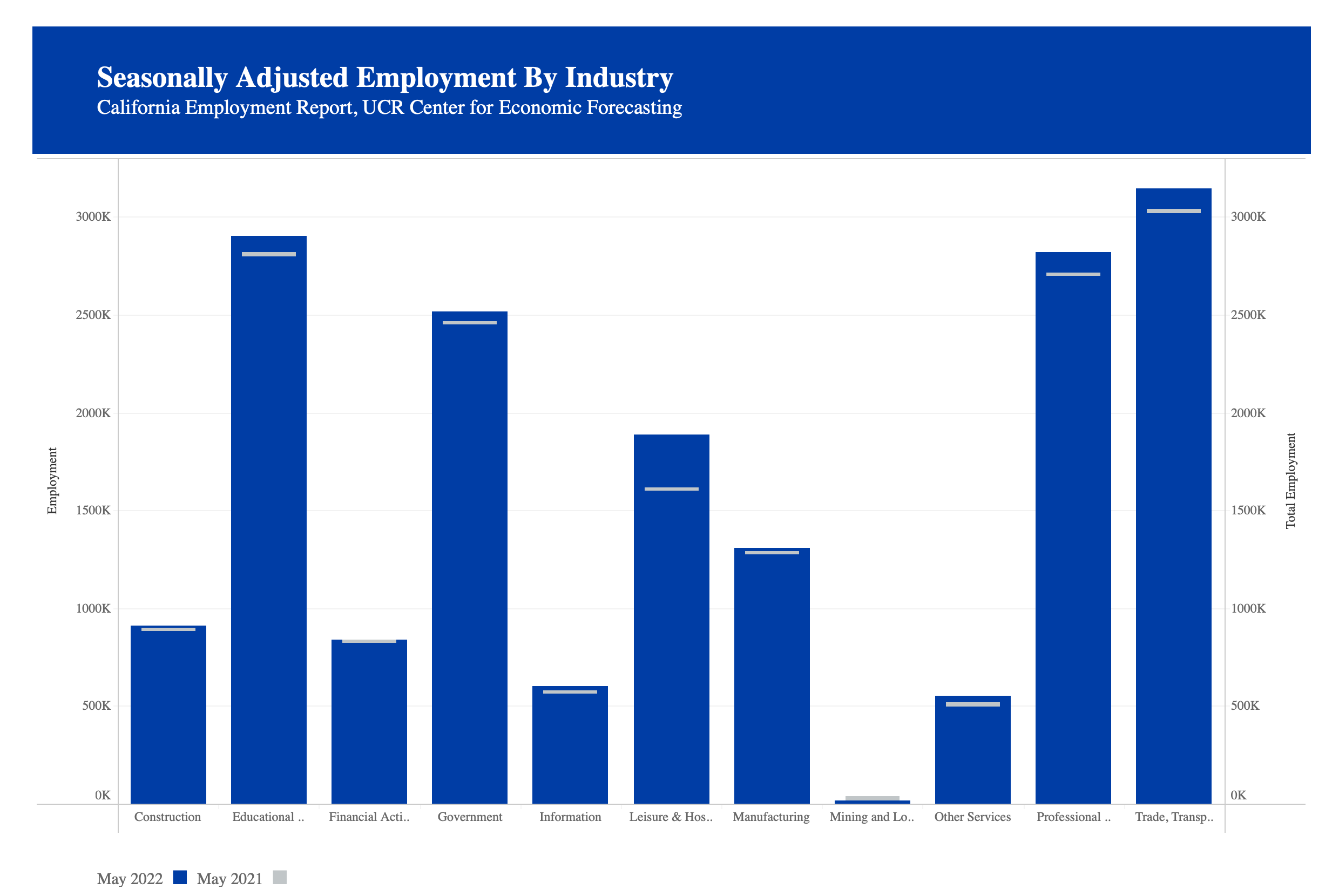
California’s labor market continued to expand at a steady pace in May (the latest data available), with total nonfarm employment in the state growing by 42,900 positions over the month, according to an analysis released jointly by the UCR School of Business Center for Economic Forecasting & Development and Beacon Economics. April’s gains were also revised up to 44,600 in the latest numbers, a 3,200 increase from the preliminary estimate of 41,400. While California has added jobs at a healthy pace in 2021 and 2022, as of May 2022, the state has recovered just 93% of the jobs that were lost in March and April 2020, and there are still 193,800 fewer people employed in California compared to February 2020. Total nonfarm employment in the state contracted 1.1% over this time compared to a 0.5% drop nationally. However, with a larger portion of its workforce to be recovered, California increased payrolls by 5.2% from May 2021 to May 2022, outpacing the 4.5% increase nationally over the same period. California’s unemployment rate fell to 4.3% in May, a 0.3 percentage-point decline from the previous month, which was driven by an increase in household employment (+121,000). California’s unemployment rate remains elevated relative to the 3.6% rate in the United States overall. While growing by 75,000 in May, the state continues to struggle with its labor supply. Since February 2020, the California labor force has fallen by 232,100 workers, a 1.2% decline. “The low unemployment rate in the state shows that worker supply remains the primary obstacle to job growth in California,” said Taner Osman, Research Manager at the UCR Center for Economic Forecasting and Beacon Economics. “Moreover, a clear dichotomy has emerged, whereby labor markets in the state’s central communities have outperformed the coastal communities; the coast is routed in high cost and housing supply constraints and continues to experience labor market shortages.”
_________________
The Beacon Employment Report | California is a unique analysis of California’s employment numbers and trends. Each month, they link econometric predictions to data released by the U.S. Bureau of Labor Statistics and the California Employment Development Department to identify important changes in employment across industries and regions. The Beacon Employment Report is also one of the few analyses that uses seasonally adjusted numbers, which are critical to revealing accurate trends and insights within data.
